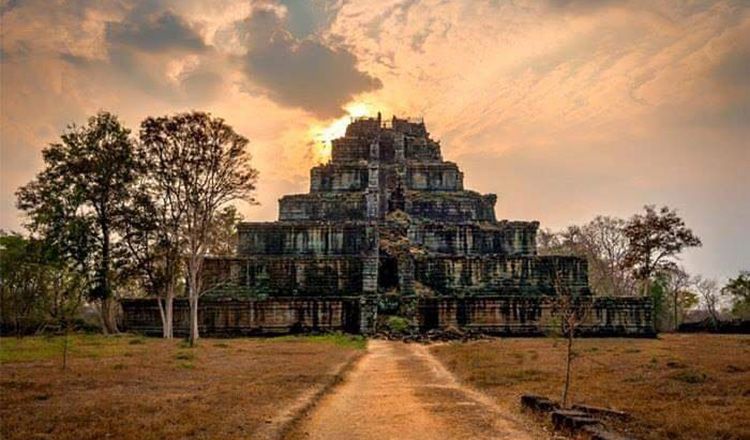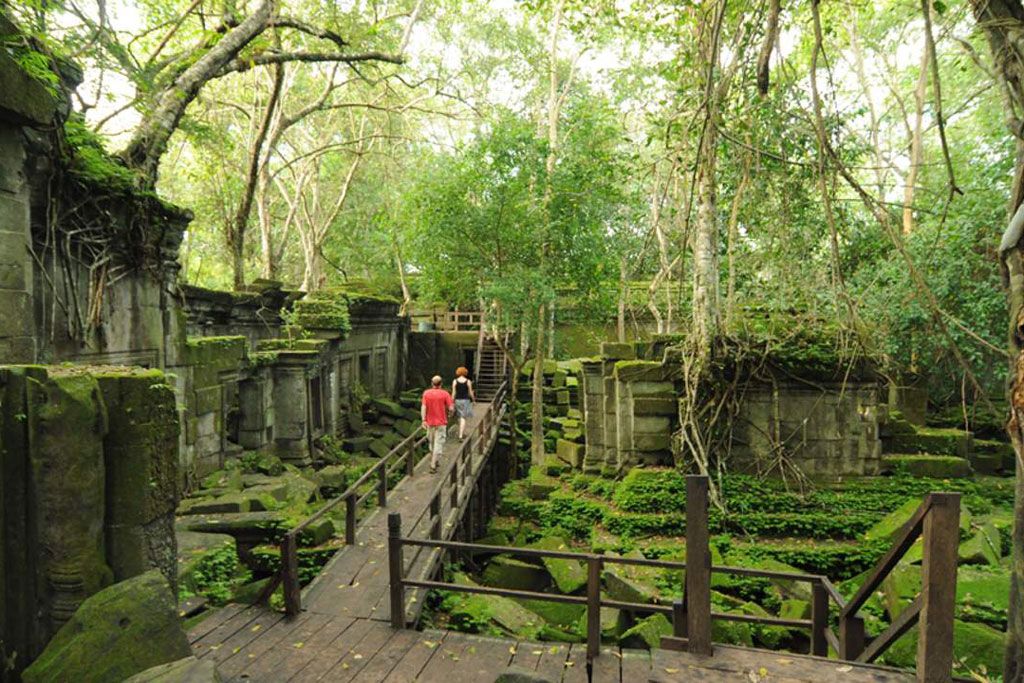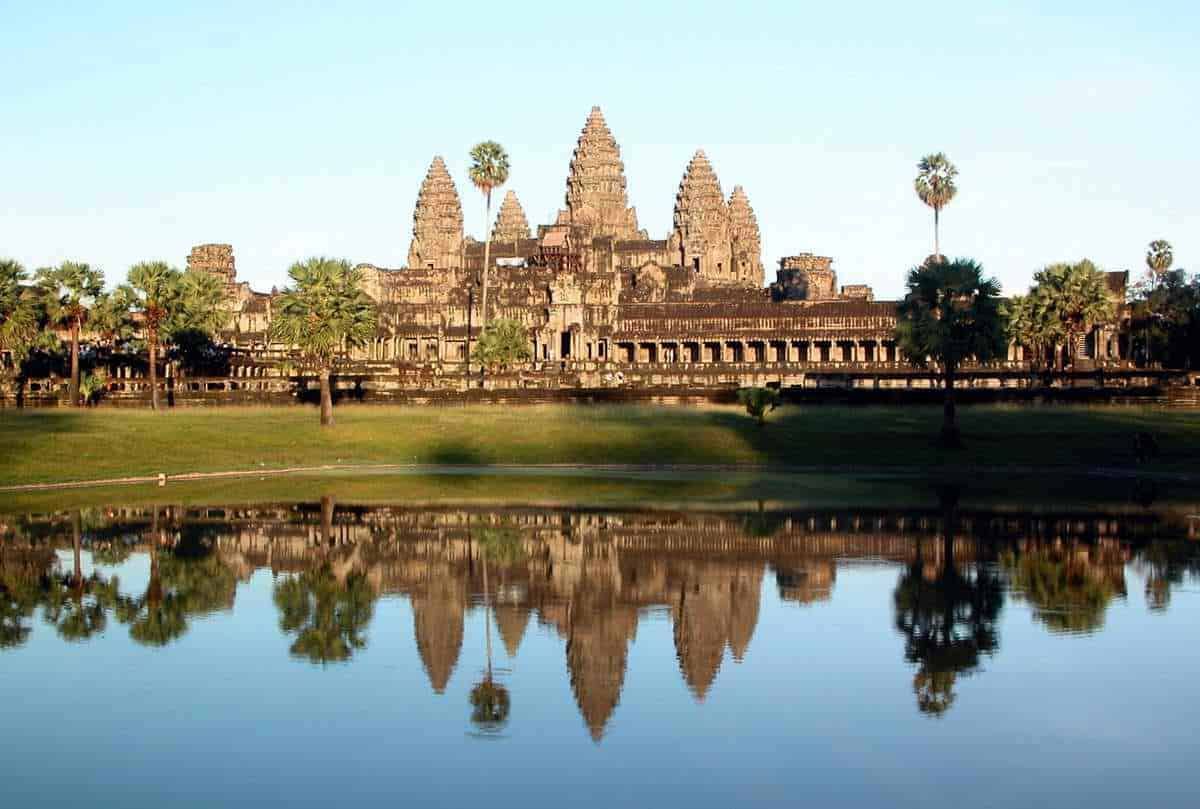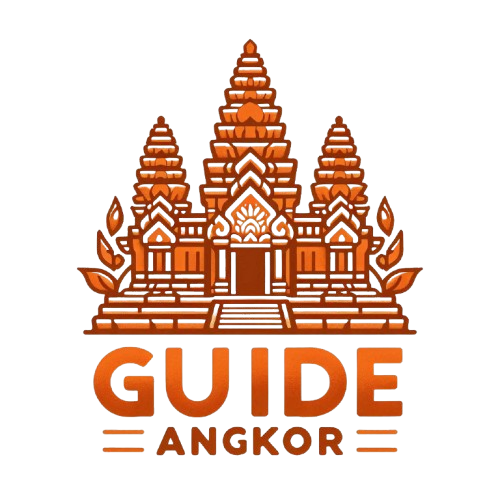Getting to know Cambodia
Cambodia is located in tropical Land climate. only 2 Seasons are Raining and Dry Season.

Geography
Cambodia, a small kingdom with a land area of 181,035 square kilometers, is comparable in size to Washington State or England and Wales. The Mekong River, the country's lifeline, spans about 500 kilometers, dividing it into northern and southern regions. The Tonlé Sap Lake is Southeast Asia's largest freshwater lake. During the monsoon season (June to October), the Tonlé Sap River reverses its flow, making it the only river in the world to flow in both directions, filling the lake. Two-thirds of Cambodia consists of central plains, which are vital for agriculture, particularly rice production. These fertile floodplains are sparsely forested, while the surrounding hills are densely forested.

Agriculture
The monsoon with its cycles of dry and wet seasons builds the rhythm of the Cambodian people and agriculture. The wet season (May – October) transforms the plains into fertile arable land. The pattern of expansion and contraction of the Tonlé Sap Lake is the backbone of Cambodian production of fast growing deep-water rice. The annual flooding covers the surrounding countryside with a nutrient rich layer. The Cambodian fishing industry also relies on the Tonlé Sap. In the dry season there is large-scale commercial fishing and with the annual replenishment of the waters of the Great Lake with the nutrient-rich waters of the Mekong, fish yields are some of the highest in the world.convert to german

Climate
Climate Two monsoons set the rhythm of rural life in Cambodia. The cool, dry, northeastern monsoon blows from about November to March and brings little rain. From May to early October, the south-western monsoon picks up moist air from over the Indian Ocean, bringing strong winds, high humidity, and heavy rains throughout the country. The weather is transitional between the seasons, but even during the wet season it rarely rains in the morning. Most of the rain comes in afternoon downpours. Visitors should be warned that roads in the northeastern regions in particular, can become flooded during the rains. Travel in these areas should be avoided during the peak of the wet seasons. convert to german version.

History
Cambodia's history begins with the legend of Kaundinya, an Indian priest who founded the first Khmer kingdom, Funan, in the 1st century AD. This Hindu kingdom, the earliest Indianized state in Southeast Asia, dominated the region for over 600 years. In 800 AD, Jayavarman II united the Khmer people, establishing the Kingdom of Kampuchea and the Hindu religion. The Khmer Empire, centered around Siem Reap, reached its zenith but declined by the mid-19th century. Seeking protection, Cambodia became a French protectorate in 1863 and a colony by 1884. Independence was achieved in 1953 but remained fragile due to regional conflicts.
The Vietnam War spilled into Cambodia in 1969, leading to the rise of the Khmer Rouge, who seized power in 1975. Under Pol Pot, Cambodia endured a brutal regime aiming for an agrarian communist state, resulting in genocide and over a million deaths. Vietnamese forces invaded in 1978, ousting the Khmer Rouge and establishing a new government. Peace negotiations culminated in the 1991 Paris Peace Agreement, and Cambodia transitioned to a constitutional monarchy after 1993 elections. King Norodom Sihanouk returned to the throne, and Hun Sen's government solidified control after 1997. Cambodia is now an ASEAN member and a recognized constitutional monarchy.
